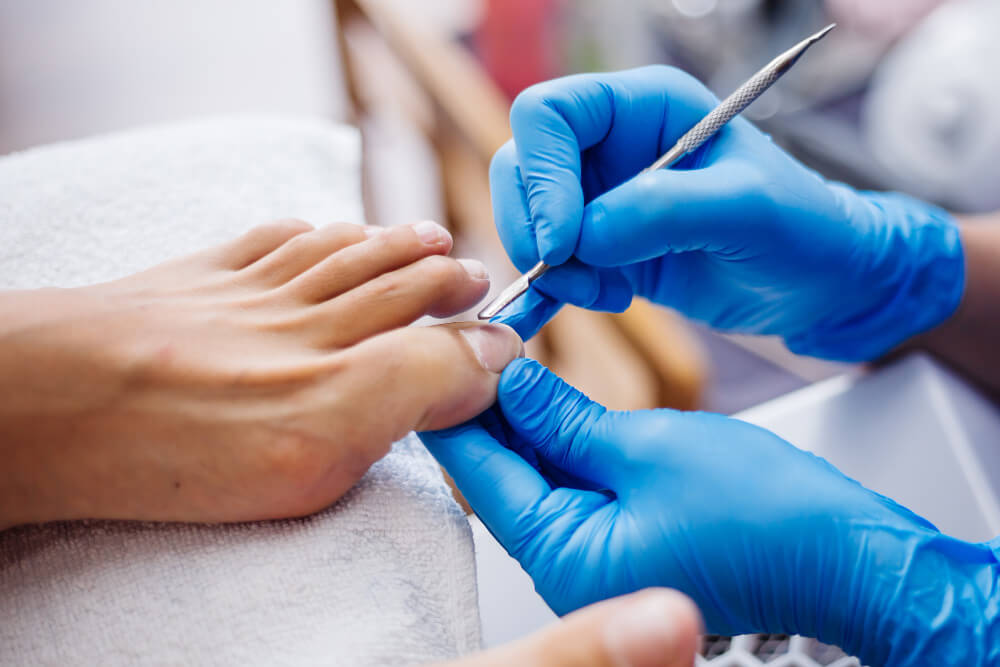Fungal Nail Infections: A Complete Guide to Podiatric Care
Fungal nail infections, commonly referred to as onychomycosis, are a common condition that affects both toenails and fingernails. These infections can cause the nails to become discolored, thickened, and brittle, often leading to pain and discomfort. Podiatrists are equipped to diagnose and treat fungal nail infections, offering effective solutions and improving overall foot health.
Causes of Fungal Nail Infections
Fungal nail infections are caused by fungi that thrive in warm, moist environments. Several factors can increase the risk of developing fungal nail infections, including:
- Injury to the Nail Cracks or breaks in the nail can provide an entry point for fungi.
- Weakened Immune System A weakened immune system can make individuals more susceptible to fungal infections.
- Diabetes People with diabetes are at a higher risk of developing fungal nail infections due to poor circulation and nerve damage.
- Poor Foot Hygiene Not washing and drying the feet properly can create a favorable environment for fungal growth.
- Wearing Tight-Fitting Shoes Shoes that are too tight can create a moist environment that promotes fungal growth.
- Other Risk Factors Additional risk factors include advanced age, athlete’s foot, and certain medications.
Symptoms of Fungal Nail Infections
Symptoms of fungal nail infections may vary, but common signs include:
- Discoloration The nail may become yellow, white, or brown.
- Thickening The nail may thicken and become brittle.
- Crumbling Edges The edges of the nail may become crumbly or ragged.
- Pain or Discomfort In some cases, fungal nail infections can cause pain or discomfort.
Diagnosis of Fungal Nail Infections
Podiatrists will typically diagnose fungal nail infections based on a physical examination and a review of your medical history. In some cases, a skin scraping or culture may be necessary to confirm the diagnosis.
Treatment for Fungal Nail Infections
Treatment for fungal nail infections may involve a combination of the following:
- Topical Antifungal Medications Topical creams or ointments applied directly to the affected nail.
- Oral Antifungal Medications Oral medications that can be more effective in treating severe or persistent infections.
- Laser Therapy Laser therapy can be used to destroy the fungus that causes the infection.
- Surgical Removal In severe cases, surgical removal of the affected nail may be necessary.
Preventing Fungal Nail Infections
Taking preventive measures can help reduce the risk of developing fungal nail infections. These include:
- Good Foot Hygiene Washing your feet daily with soap and water and drying them thoroughly.
- Proper Footwear Wearing well-fitting shoes that allow your feet to breathe.
- Avoid Sharing Personal Items Do not share socks, shoes, or nail clippers with others.
- Treat Underlying Conditions Addressing underlying medical conditions, such as diabetes, can help reduce the risk of fungal infections.
The Importance of Following Up with a Podiatrist
Regular follow-up appointments with your podiatrist are essential for monitoring your progress and ensuring successful treatment.
- Assessing Treatment Effectiveness Evaluating the effectiveness of the treatment plan and making adjustments as needed.
- Preventing Recurrence Taking steps to prevent the return of the fungal infection.
- Addressing Complications Identifying and treating any complications that may arise.
By seeking care from a qualified podiatrist, individuals can effectively manage fungal nail infections and improve their overall foot health. Early diagnosis and treatment are essential for preventing complications and ensuring a positive outcome.


